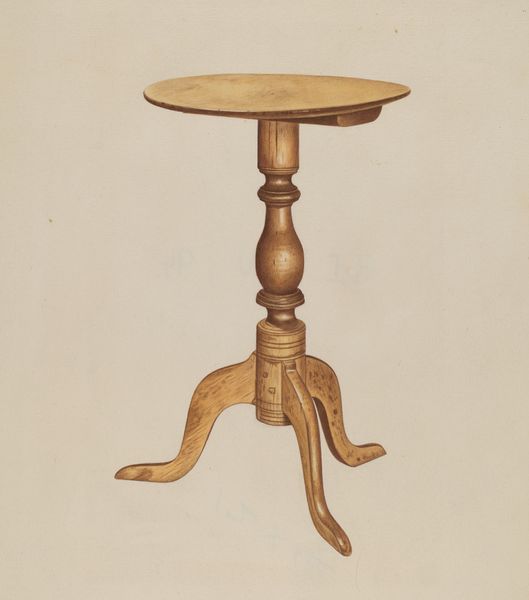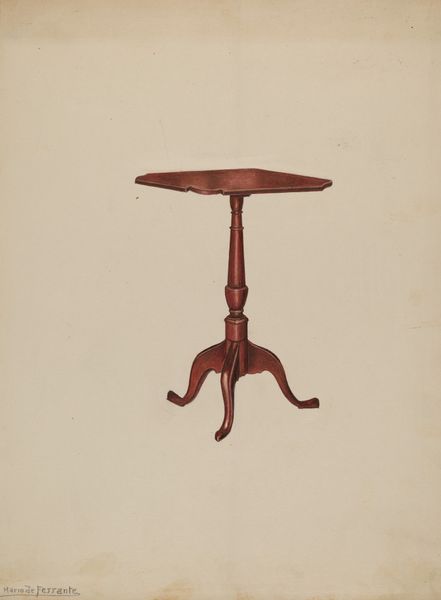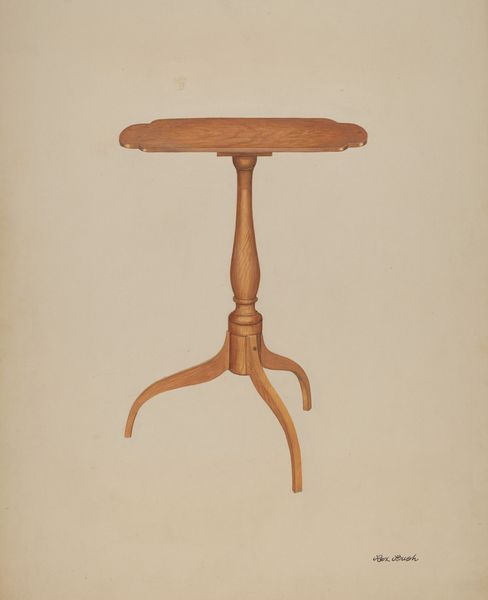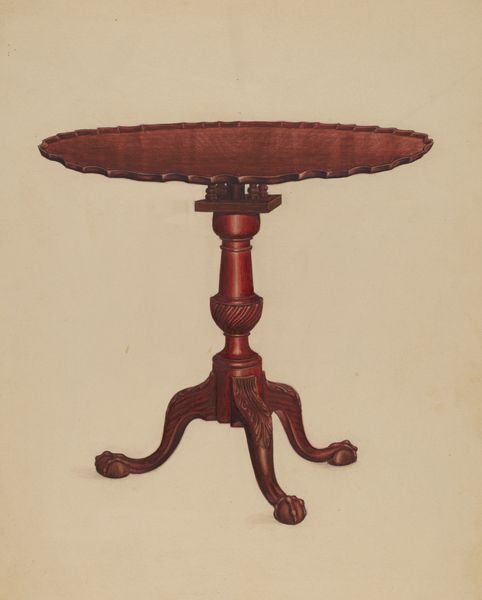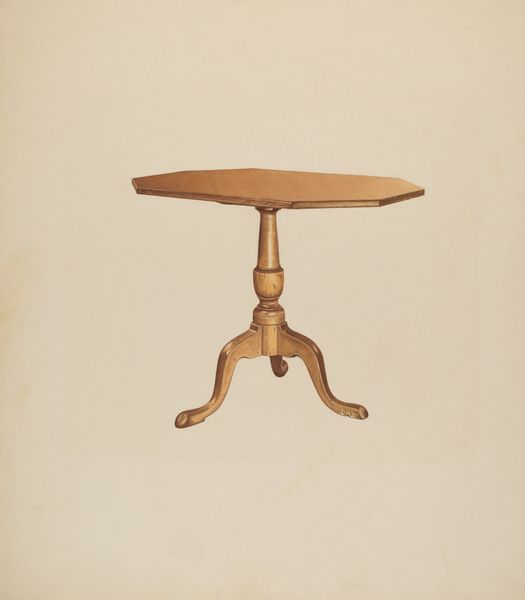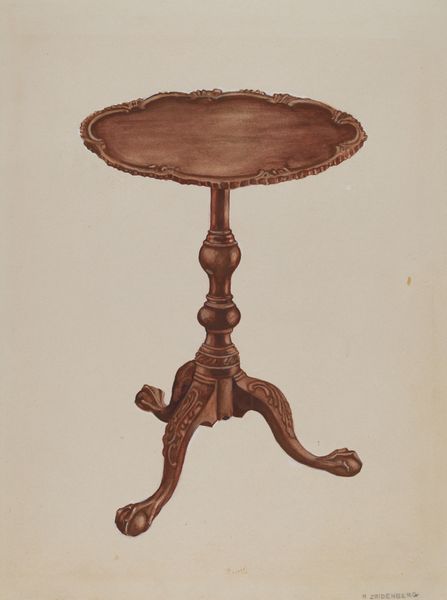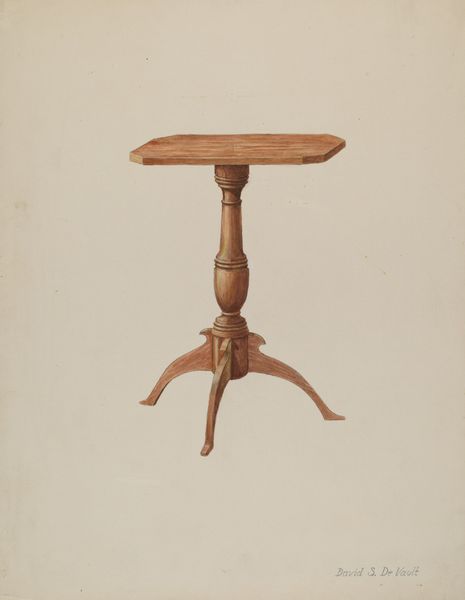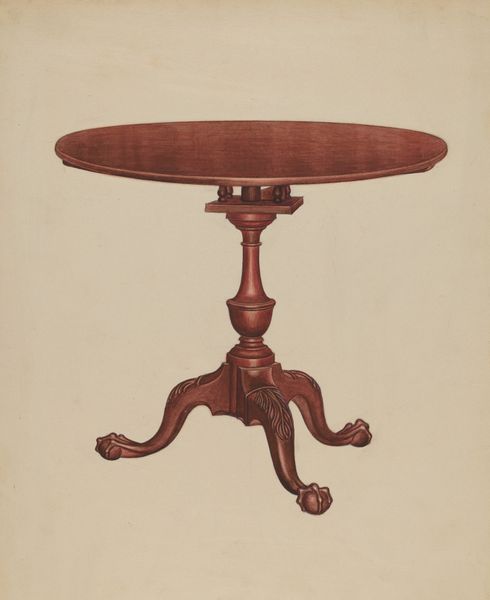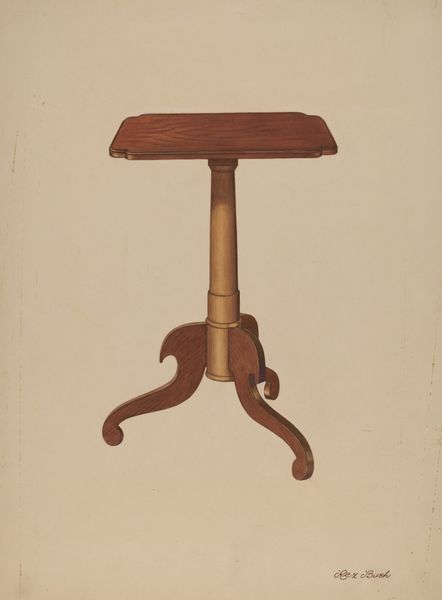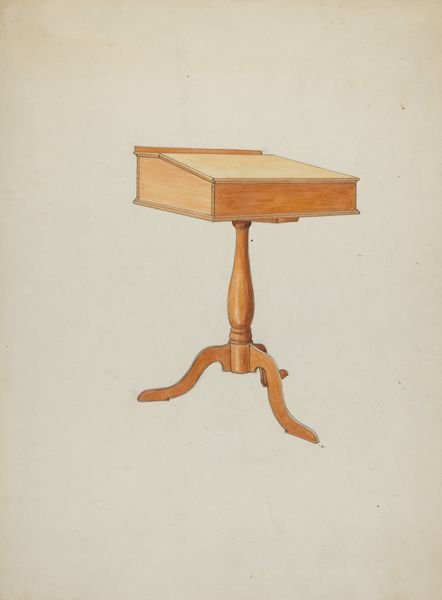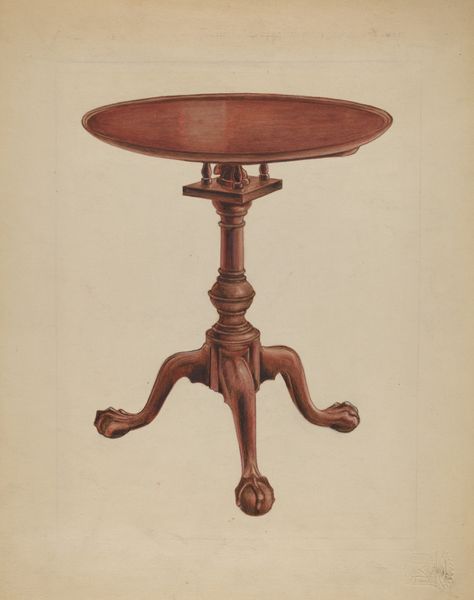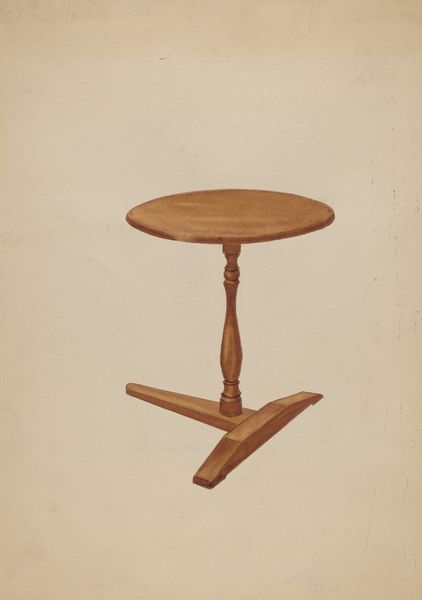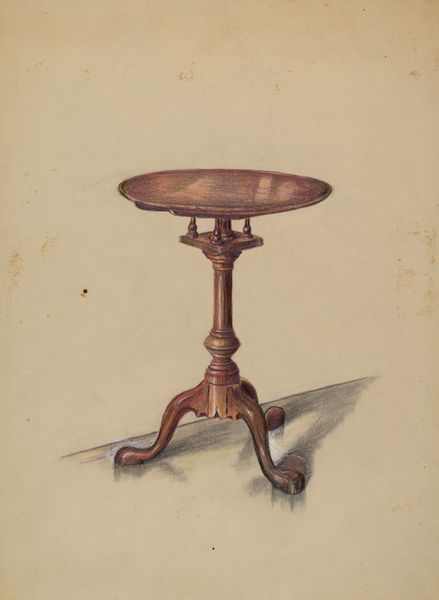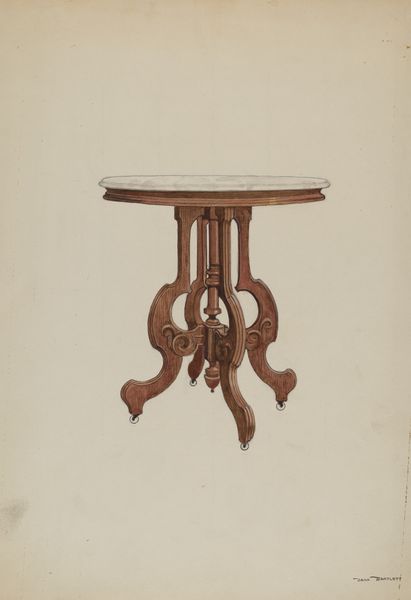
drawing, watercolor, pencil
#
drawing
#
watercolor
#
pencil
#
watercolor
Dimensions: overall: 31.3 x 23.6 cm (12 5/16 x 9 5/16 in.)
Copyright: National Gallery of Art: CC0 1.0
Curator: Let’s consider this rendering of "Table," dating from 1935 to 1942. The artist, Michael Riccitelli, employs pencil and watercolor to depict a small, elegant table. What is your first impression? Editor: It evokes a sense of domestic tranquility, almost a Victorian parlor. The delicate shading and lines seem to soften its presence. What symbols resonate with you here? Curator: Given the Depression era dating, the image may connect to larger conversations about craft and value, reminding us how the everyday could be a site for creativity and even resistance when material comforts are scarce. Tables are a central symbol within the domestic sphere; to render it in soft pencil and watercolor further refines those gendered associations. Editor: I’m interested in how the artist uses line and form. The legs gracefully splay outward and connect to the ornate central support of the table; it’s quite traditional in some ways, and I wonder if those traditional forms carry intentional weight. Are these common associations during this era, perhaps linking a bygone era with its place in recent history? Curator: It could symbolize an aspirational middle-class life contrasted with the grim realities for many Americans at the time, especially for workers. Labor shortages and limited materials surely made access to even small objects of furniture increasingly complicated, right? Perhaps the choice of rendering rather than crafting becomes the crucial move. Editor: Looking closer, the three legs and the rounded tabletop echo archetypal symbols, suggesting both stability and wholeness. There is an alchemical balance at play between practicality and beauty; form follows function. Curator: Absolutely, the watercolor palette with the monochromatic scheme does not compete with this sense of quiet dignity. Even the lighting supports the composition by suggesting softness and subtle detail in this modest table design. Editor: Thinking of utility and history allows me to consider a table more like an altar where precious or symbolic objects are kept for the purposes of daily ceremony. I might need to buy one for my writing room, now that I see this image more clearly. Curator: Precisely. Reimagining design choices as powerful narratives transforms the act of observing what we call a ‘simple’ table, encouraging a far wider socio-historical understanding.
Comments
No comments
Be the first to comment and join the conversation on the ultimate creative platform.
